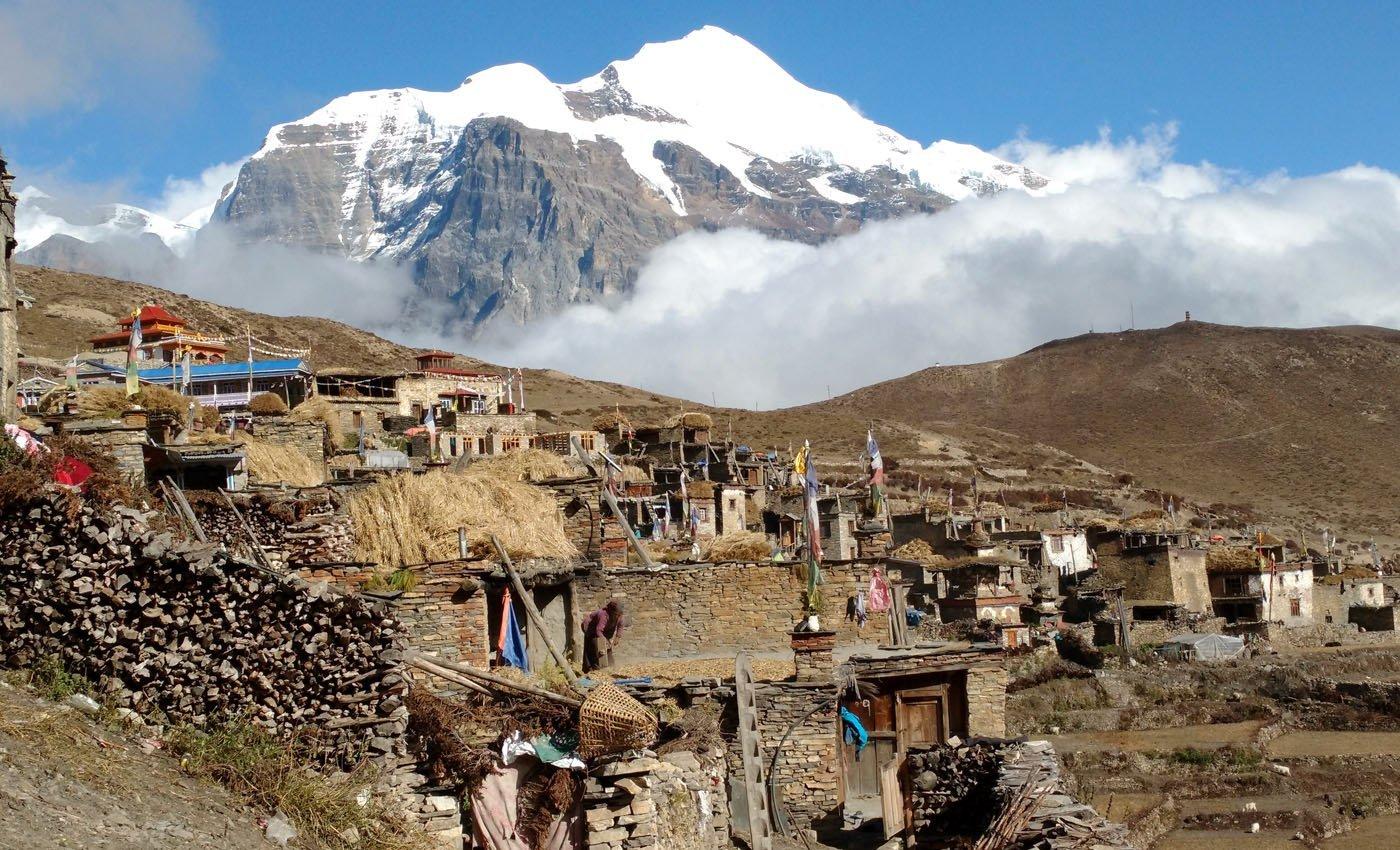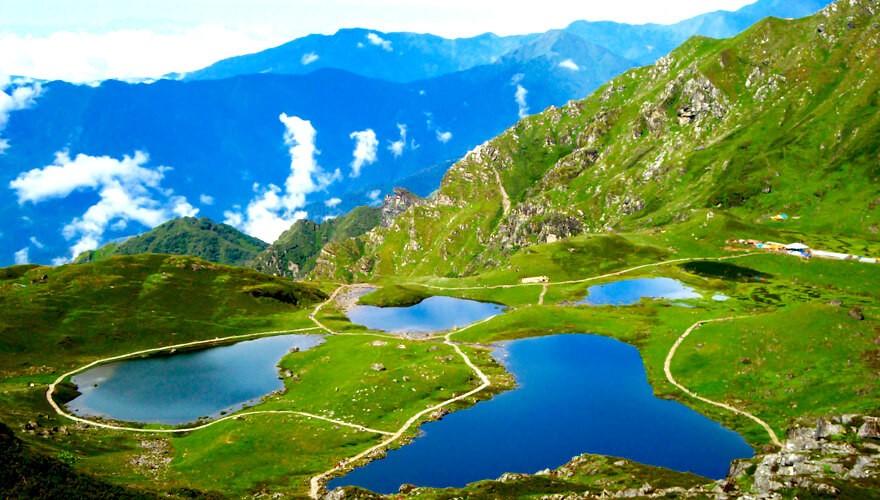Kapuche lake
- Author : Prekshya
- Date : 27th September, 2024
- Time : 1 Min Read
- Euphoria
- Blog Detail
Kapuche Lake trek is one of the best emerging trekking routes in Nepal. Along with a unique location and pristine natural presence, the path is remote and less crowded than other trails. So, if you are looking for a trekking route that offers grand scenery, an isolated lifestyle, and a rarely hiked trail, then Kaphuche has much to offer. The Lowest Glacier Lake lies to the northeast of Sikles Kaski. It is a short trek that begins at Pokhara and goes through several villages and hills. Although the trekking route was recently discovered and opened for visitors, it has been slowly getting popularity due to its natural beauty and unique trekking experience.
Why will you love Kapuche Lake Trek?
A clear and up-close view of the Annapurna II, 26041 ft. Annapurna IV (24690 ft) and Lamjung Himal (22911 ft).
The largest Gurung community in Nepal is known for its unique culture, customs, and traditions. You will be well-acquainted with Sikles village, its culture, and its lifestyle.
The area around the lake is home to a diverse array of flora and fauna, including lush forests and alpine meadows.
Explore the lowest-altitude glacier lake in Nepal.
Hike through verdant vegetation, rhododendron forest, and terraced fields.
An easy hike that people of all ages can do.
Discover the Lifestyle in Some Remote villages of Nepal
The Kapuche Glacier lake is located at an altitude of 2546 meters from sea level. It lies inside the Gurung Village of Sikles in the Kaski district in the Annapurna region. So, we can combine this trek with Sikles Village Trek. Kapuche Glacier Lake is claimed to be the lowest-elevation glacier lake in the world. The temperature of the lake can reach sub-zero during winter, and the surface can turn into ice. The 0.12 Km2 Lake is about 40 meters deep.
The word Kapuche is a portmanteau of the words “Ka,” which means snow or ice, “Pu,” which means breaking down and sliding, and “Che,” which means landing on flat land. Essentially, ‘Kapuche” means fallen ice that has settled on a valley, which forms the glacial lake.
The lake has a calm environment as it is situated amongst snow-capped mountains. There are also occasional avalanches that bring snow from the slopes to the lake. The lake is in a calm environment beneath the high mountains. However, there is no provision for boating, as it is not appropriately explored.
Alternate Itinerary of Kapuche Glacier Lake
Day 1: Drive to Armala and trek to Thak Village via Atighar Mauja, 5-6 hours. Overnight at Thak Village.
Day 2: Trek to Sikles Village via Tara Hill Top, 8 hours.
Day 3: Trek to Hugu Goth, 5-6 hours. Overnight at Hugu Goth
Day 4: Hike to Kaphuche Lake and return to Hugu Goth. Overnight at Hugu Goth.
Day 5: Trek to Sikles, 4-5 hours and drive back to Pokhara.
The extended Kapuche lake itinerary starts from Pokhara Deep, and we pass human settlements like Aatighar Mauja, Thak, Tara Hill, Sikles, and Hugu. We spend a night each in Thak village, Tara Hill Top, and Sikles. Moreover, we spend two nights in Hugu. We can choose between a lodge stay, homestay, and outdoor camping. Among these places, Tara Hill Top offers the best scenic view. We can visit caves and museums, pass through suspension bridges and witness some magnificent views.
This trek route is one of the least traveled trails. So, you will enjoy this trek without being disturbed by the crowd. This trek is best to do during Autumn and Spring.
Why is Kapuche called the Lowest glacier lake in the world?
Before we begin explaining to you why Kapuche is considered the Lowest glacier lake in the world, let's learn a bit about glacier lakes:
Glacial Lakes Short Overview:
Glacial Lakes Short Overview: A glacier lake is typically formed when it erodes the land and then melts, filling the hole or space it has created. The glacier lakes are formed over hundreds of years after glaciers have eroded and melted. Most of these lakes are high in the mountains, often thousands of meters above sea level.
However, Kapuche Glacier Lake starkly contrasts this pattern, making it an intriguing subject for exploration and study.
Kapuche Glacier Lake: A Detailed Overview:
Kapuche Glacier Lake, nestled within the diverse landscapes of Nepal, has recently emerged as a significant point of interest among global travelers and environmentalists alike. Uniquely positioned at the lower reaches of the glacial line, Kapuche Lake stands out among its lofty counterparts as the world's lowest glacier lake. Its exceptional positioning and charm offer invaluable insights into the dynamic interplay between climate, geology, and ecosystems.
But why does the title "lowest glacier lake" hold significance? Simply put, the answer lies in the unique challenges and opportunities this presents. The lake is in the Madi Rural Municipality, Sikles Kaski, Nepal, situated at an altitude of around 2,500 meters, is nestled at the foot of two remarkable mountains: Annapurna II, towering at 7,937 meters (26,040 feet) and ranked as the 16th highest mountain in the world, and Lamjung Himal, which reaches an impressive 6,983 meters (22,910 feet). These majestic peaks form a breathtaking backdrop for the lake, contributing to its allure and splendor. All the collected snow from the surrounding peaks gradually flows through the glacier, eventually forming the lake. This natural phenomenon showcases how the mountains and glaciers shape the landscape, channeling the life-giving waters that sustain the ecosystem below.
While one may argue Kapuche isn't the Lowest glacier lake in the world, and explain Lake Louise, or Bow Lake in Canada, are Lower than Kapuche. However, nearby glaciers heavily influence these lakes, so they receive glacial meltwater. Still, they don't fit the strictest definition of a glacial lake- a lake currently being fed by the meltwater of a glacier and/or one formed in a depression carved out by a glacier.
Moreover, the lakes like Jökulsárlón in Iceland or Tasman Lake in New Zealand are directly formed by retreating glaciers and are filled by glacial meltwater, making them "true" glacial lakes. Still, the absence of higher glacial lakes in the region makes them less significant. While the highest glacier lake in Neweland is Lake Tasman, 740 meters (2,428 feet), the highest glacier itself in Iceland is 910m.
So, even considering the altitude of glacier lakes when people refer to Kapuche Lake as the "lowest glacial lake," they are focusing on its unique attributes, such as it being a relatively newly formed lake due to the recent retreat of the Kapuche glacier, and the fact that it's found in a region (the Himalayas) known for high-altitude glacial lakes.
Kapuche Glacier Lake's relatively low elevation indicates different climatic conditions than higher glacier lakes. These varying conditions can provide a wealth of knowledge on the effects of climate change and glacial dynamics at lower altitudes, contributing to more comprehensive environmental studies.
Furthermore, Kapuche Lake is situated in such a unique location that makes it easier for those who wish to enjoy the journey to the world’s lowest glacier lake as tourists or those who aim to prevent the effects of global warming as researchers. Additionally, due to the presence of Kapuche Lake at such a low altitude, people can enjoy the beauty of a glacier lake without going too far into hazardous, high-altitude regions.
At the same time, the "lowest" glacier lake faces unique challenges. As global warming intensifies, lower-lying glaciers, like the one feeding Kapuche Lake, are especially vulnerable. Understanding the changes happening here could provide critical insights into the broader impact of climate change on glacier-fed ecosystems.
Leave A Comment:
Author
Related Blogs
1 min read
by Swostika
Nar Phu Valley
The Nar and Phu are two distinctive yet close valleys with excellent trekking options tucked in between the popular Annapurna and Manaslu trekking reg...
1 min read
by Prasiddha Kc
Panch pokhari
"Join a less-visited trekking route located nearby Kathmandu and get to experience distinct trekking to one of the pilgrimage sites in Nepal on our Pa...
1 min read
by Niall
Annapurna Base Camp
The Annapurna Base Camp Trek is a renowned adventure that captivates trekkers from around the world. Nestled at an altitude of 4,130 meters, the Annap...



